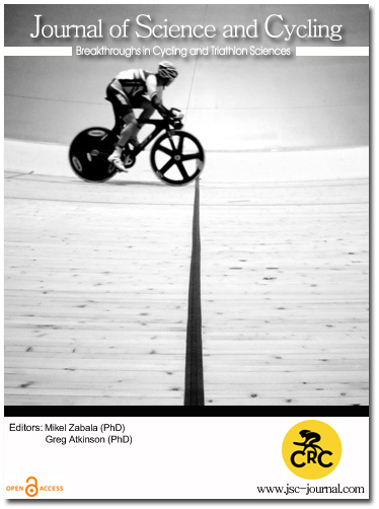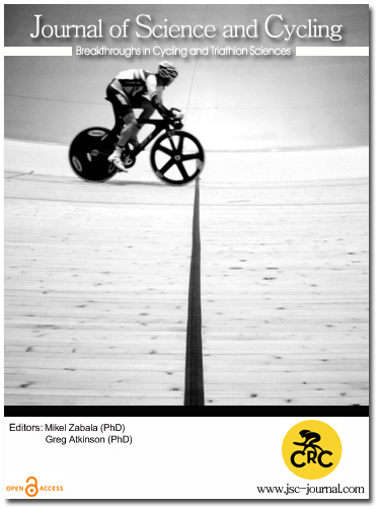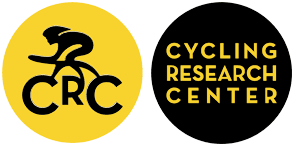Inter-limb Asymmetry Tracking During an Intense Road Cycling Training Camp
DOI:
https://doi.org/10.28985/1425.jsc.05Keywords:
Bilateral differences, Inter-limb asymmetry, Performance reduction, Athlete monitoring, Imbalance, Road cycling, Race Across America, TirednessAbstract
It has been proposed that monitoring asymmetry within athletic training programmes may be useful for injury mitigation and/or performance improvement. Within cycling, asymmetry calculation is typically limited to costly on-bike methods. The current study aimed to investigate the usefulness of an off-bike method of asymmetry assessment and assess the reliability of asymmetry calculated on subsequent days during a training camp. Eight semi-professional road cyclists completed an intense 7-day warm weather training camp. Athletes performed single leg countermovement jumps (SLCMJ) to determine inter-limb asymmetry, and scored their daily exercise intensity through rate of perceived exertion and heart rate training stress score. Neuromuscular fatigue was measured through daily countermovement jump height (CMJ). Within-session reliability was good to excellent for SLCMJ, ICC values > 0.83. Mean SLCMJ asymmetry was somewhat variable day-to-day, ranging from 11.72 ± 13.09% (Day 4) to 5.93 ± 6.19% (Day 7). Cohen’s Kappa showed a wide range of agreements from slight to substantial (0.06–0.75) for daily comparisons to baseline asymmetry scores. These results show that while measuring asymmetry as part of single day testing can be informative, successive assessment highlights the changeable nature at the individual level, which is not necessarily detectable at the group-level. Practitioners should consider creating individual baseline scores if intending to use asymmetry, which can be time consuming.
Downloads
Published
How to Cite
Issue
Section
Copyright (c) 2023 Journal of Science and Cycling

This work is licensed under a Creative Commons Attribution-NonCommercial-NoDerivatives 4.0 International License.
Authors contributing to Journal of Science and Cycling agree to publish their articles under a Creative Commons CC BY-NC-ND license, allowing third parties to copy and redistribute the material in any medium or format, and to remix, transform, and build upon the material, for any purpose, even commercially, under the condition that appropriate credit is given, that a link to the license is provided, and that you indicate if changes were made. You may do so in any reasonable manner, but not in any way that suggests the licensor endorses you or your use.
Authors retain copyright of their work, with first publication rights granted to Cycling Research Center.







